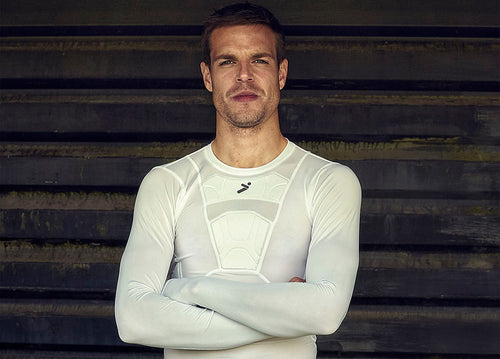Devenir testeur de produits Storelli
Tester. Améliorer. Dominer.
Chez Storelli, nous repoussons les limites pour concevoir des équipements qui protègent et améliorent les performances, mais le véritable test a lieu sur le terrain. C'est là que vous intervenez. Nous recrutons des athlètes dévoués pour tester nos derniers produits, fournir des commentaires réels et aider à façonner l'avenir de l'équipement de performance.
Quels sont les avantages pour vous ?
- Un accès anticipé aux nouveaux produits avant leur lancement
- Tests gratuits de produits à utiliser lors d'entraînements et de compétitions réels
- Remise exclusive de 25 % pour l'achat des produits testés après leur lancement ou de tout autre équipement sur notre site
- Possibilité d'obtenir du matériel gratuit en échange de photos et de vidéos de haute qualité de votre expérience
- Impact direct sur le développement futur des produits grâce à un retour d'information détaillé
- Invitation au groupe Slack privé de testeurs pour les testeurs de confiance qui fournissent des commentaires cohérents et de grande valeur.
Ce que vous ferez
- Tester de nouveaux équipements en situation réelle d'entraînement et de jeu
- Fournir des commentaires détaillés et honnêtes sur l'ajustement, le confort, la protection et la performance
- Comparer l'équipement Storelli à d'autres produits que vous avez utilisés et identifier les points à améliorer
- Soumettre vos commentaires à l'aide de notre système d'évaluation structuré
- Partager des photos ou des vidéos de l'équipement en action (facultatif mais récompensé)
- Retournez les produits testés après la période d'essai pour recevoir votre prochain article testé.
- Les testeurs éligibles qui fournissent des commentaires solides peuvent être invités à participer au groupe Slack privé des testeurs.
Qui doit s'inscrire ?
Ce programme est conçu pour les athlètes qui s'entraînent et concourent régulièrement et qui s'engagent à fournir des commentaires détaillés.
Les testeurs idéaux sont
- Les joueurs compétitifs dans les clubs, les académies, les universités ou les ligues adultes compétitives.
- Les entraîneurs et les formateurs qui travaillent directement avec les athlètes
- Les parents de jeunes joueurs qui veulent assurer la meilleure protection et les meilleures performances à leur enfant
- Les athlètes de toutes les positions, y compris les gardiens de but, les défenseurs, les milieux de terrain et les attaquants.
À qui ce programme ne s'adresse-t-il pas ?
- Les joueurs occasionnels ou ceux qui ne s'entraînent pas ou ne participent pas régulièrement à des compétitions
- Les personnes qui recherchent uniquement du matériel gratuit et qui n'ont pas l'intention de fournir un retour d'information significatif.
- Les candidats qui ne répondent pas aux demandes de commentaires dans les délais impartis.
Le fait de ne pas soumettre de commentaires, de fournir de fausses informations ou de tenter d'exploiter le programme entraînera l'élimination du groupe de testeurs.
Comment postuler
- Soumettez votre candidature ci-dessous.
- En raison de la forte demande, tous les candidats ne seront pas retenus.
- Seuls les testeurs sélectionnés seront contactés. Si vous ne recevez pas de nouvelles de notre part, c'est que vous n'avez pas été choisi pour le moment.
- Si vous êtes sélectionné, vous serez associé à des produits de test en fonction de votre poste, de votre expérience et de vos mensurations.
- Testez l'équipement et soumettez des commentaires détaillés.
- À la fin de votre période d'essai, renvoyez le produit testé pour recevoir le suivant.
- Si vous fournissez régulièrement des commentaires de qualité, vous pourrez être invité à participer à notre groupe privé Slack pour les testeurs de confiance.
Si vous avez des questions, contactez-nous à l'adresse [Insérer l'adresse e-mail de contact].
Avantages supplémentaires
- Les soumissions de contenu de haute qualité peuvent donner droit à du matériel Storelli gratuit au-delà du programme de test.
- Les testeurs de confiance qui fournissent régulièrement des commentaires précieux peuvent être invités à participer au groupe privé Slack.
- Accès exclusif à des avant-premières de produits et à des discussions d'initiés.
Postulez dès aujourd'hui pour contribuer à façonner l'avenir de l'équipement de performance.




















